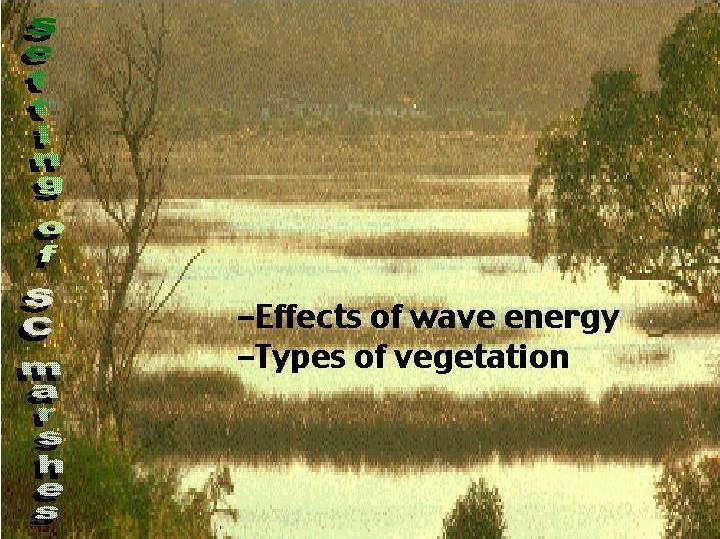 |
|
Many barrier island salt marshes are made of Holocene and Pleistocene sands and muds.
Often, marshes are formed when sea level naturally rises, flooding interior parts of
barrier islands which often have a Pleistocene composition. Once the sea level drops
and the water recedes from the island, marshland is left, along with a system of tidal
creeks and streams that serve to connect the island and the shore of the mainland. The most prevalent type of vegetation in salt marshes is smooth cordgrass, or Spartina alterniflora. This grass dominates in the lower levels of salt marshes, growing in the relatively saturated mud-sand soil mixture of the low marsh. Higher above mean sea level in the marsh, in drier, sandier soils, plants like needlerush (Juncus roemerianus), spiked cordgrass (Distichlis spicata) and glasswort (Salicornia spp.) are commonly found. This wide variety of marsh grasses are what provide much of the productivity of the salt marshes. In Georgia, the marshes along barrier islands are left largely untouched by the erosive forces of waves. Due largely in part to a shallow continental shelf, wave heights are kept at minimal levels, averaging from 0.8m to 1.25m. The Georgia coast is dominated by tides as opposed to high wave energies. (graphic: http://www4.wittenberg.edu/academics/geol/progcrs/geol220/mcgarvey/index.shtml)
| |
|